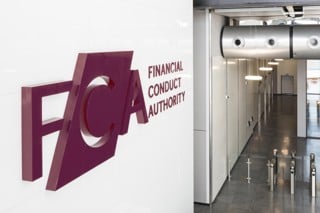The Bank of England has told car loan providers and banks they are at the risk of action against reckless lending due to a 'spiral of complacency’ from lenders on mounting consumer debt.
In a speech to the University of Liverpool’s Institute for Risk and Uncertainty, Alex Brazier, executive director, financial stability, and a member of the Financial Policy Committee, said: “The spiral continues, and borrowers rack up more and more debt.
“Lending standards can go from responsible to reckless very quickly. The sorry fact is that as lenders think the risks they face are falling, the risks they - and the wider economy - face are actually growing.”
In car finance, Personal Contract Purchase (PCP) plans now finance almost four in five new car purchases, having accounted for one in five in 2006.
Arrears rates are lower than on other forms of consumer credit, and unlike credit cards or personal loans, the lenders are predominantly the finance arms of car companies. Losses to those companies – however painful for them – are much less significant for the wider economy than losses at banks.
“Nevertheless, the banks that are involved, as well as the shareholders of car companies, will want to think very carefully about the risks,” Brazier said.
He said that even if a borrower makes all the monthly payments on a PCP contract, the lender can still lose money if used car prices fall. He said: “The advent of PCP means – as the small print always says – the past may not be a good guide to the future.”
Mortgage debt
Brazier said high levels of mortgage debt can make downturns deeper by causing consumers to aggressively cut back spending in order to service their mortgages.
High levels of consumer debt – like credit card debt and personal loans – can make banks more vulnerable to downturns because borrowers are much more likely to default.
More vulnerable banks cut back lending, also making downturns deeper. Countries with higher levels of debt can therefore have more vulnerable banks and deeper recessions.
Brazier said: “Household debt – like most things that are good in moderation – can be dangerous in excess. Dangerous to borrowers, lenders and, most importantly from our perspective, everyone else in the economy.”
He said that in the past two years, lending has grown in line with the economy: credit supply looks neither too cold – as it has been for much of the past decade – nor too hot – as it was in the build-up to the financial crisis.
And the level of consumer debt is no higher relative to incomes than it has been on average in the past 20 years. But within this overall picture, consumer credit has been growing very rapidly. In the past year, outstanding car loans, credit card balance transfer and personal loans have increased by 10%, while household incomes have risen by only 1.5%.
Brazier warns that in a period of good economic performance and low loan losses, lenders can enter a “spiral of complacency”, with lenders thinking they can reduce prices and loosen lending criteria. As credit becomes cheaper, it’s taken up more widely and is serviced more easily.
Terms and conditions on credit cards and personal loans have become easier, and lenders’ own assessments of how risky these loans are, and which they use to calculate how much capital they need to withstand losses, have fallen. But credit scores of new borrowers are lower than they were two years ago.
Brazier said: “Lenders have been the lucky beneficiaries of the benign way the economy has evolved. In expanding the supply of credit, they may be placing undue weight on the recent performance of credit cards and loans in benign conditions.”
The Bank has already in recent months taken steps to strengthen banks’ defences against losses by raising the capital buffers they are required to hold on all their lending, and has accelerated this year’s stress test of banks’ consumer credit loans.
Brazier said: “By September we will have assessed whether the rapid growth has created any gap in the line. If it has, we’ll plug it.”





















Login to comment
Comments
No comments have been made yet.